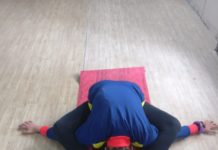The period is that time of the month for all the ladies where a woman faces physical as well as mental challenges. The energy dedicated to do the daily tasks is driven to fight the pain caused by menstrual cramps. At times the irregular periods and flow becomes a big headache. The periods cause a huge amount of pain that becomes unbearable by many. Life is hampered and stress levels get high! The period related disorders are mostly results of hormonal changes, cysts, fitness, stress, etc. any one of the reason can result in delay of date, flow and create unwanted pain during period. Thanks to yoga, there is an alternate method to tackle these menstrual disorders in life.
Yoga helps in correcting the flow of hormones, deceasing stress levels, removing obstructions in the ovaries (Cyst, PCOD) etc. All the asanas mentioned below give either or all of the benefits and help in making the cycle regular every month!
Here are 7 useful asanas one should practice for a happy period :
SHIRSASANA
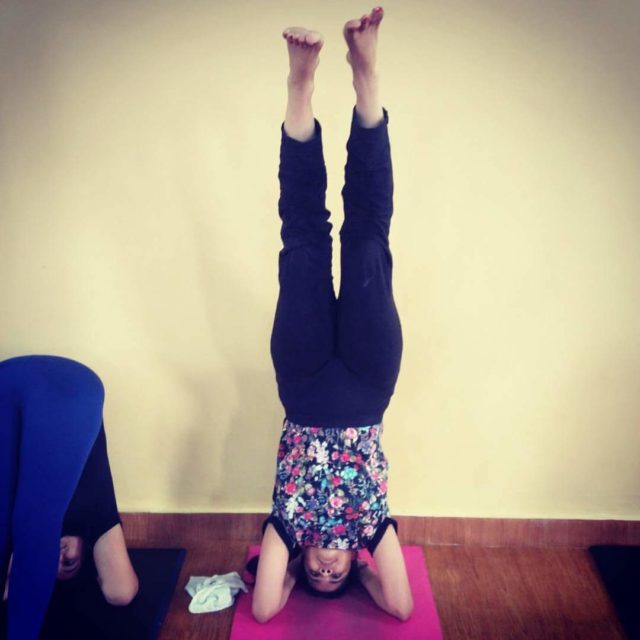
Staying upside down is the best thing to do to revive the flow in the nerves and clearing out the obstructions inside the body causing the blockages in the ovaries in the form of cysts. Formation of cysts have become quite common problem in women these days, asana like sirsasana help in thrusting the blood upside down with an additional force of gravity that eventually help in eroding the unwanted cysts or blockages.
Steps:
- Come in the cat pose on your heels and palms. Now keep your elbows, forearm distance apart. Check this by holding both the elbows together.
- Interlock the fingers in between the elbows and raise the knees up in order to touch the feet completely down.
- Slowly lift your heels up and softly touch your head down. Keep the head in a way that it partly touches the interlocked palms and partly touches the mat.
- Engage your core and slowly lift one leg at a time by bending the elbows and shifting the weight on arms and head.
- Try to go up with both the legs and hold this for some time. This is also called the dolphin pose.
- Now slowly raise both the legs straight up and balance. Stay in this asana for half a minute or more and come back slowly without a jerk. Lie down in savasana
PASHCHIMOTTANASANA
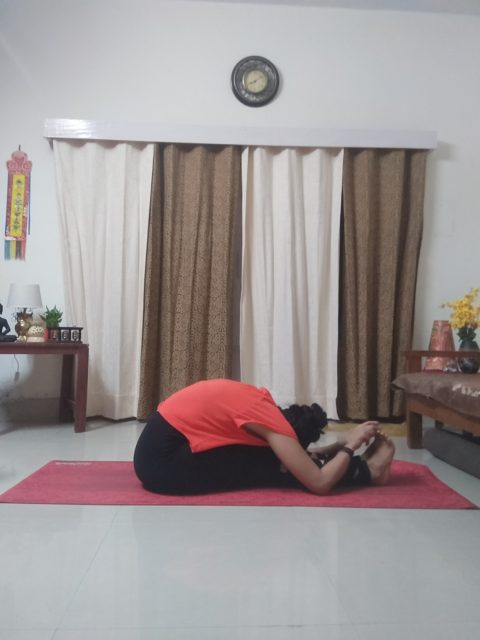
Pashchim means the west. It implies the back of the whole body from head to the heels. In this asana the back of the whole body is intensively stretched. The asana relieves the body from stress and activates the parasympathetic nervous system. Also the forward movement of head to toes engages the core and increases the blood flow in the pelvis, thus helping in getting the period flow normal.
Here are the steps to do pashchimottonasana:
- Sit down in dandasna, with legs stretched out in front. Take a few deep breaths.
- Exhale, extend the hands and catch the toes. Extend the spine and try to keep the back concave.
- Exhale out deep and now extend the spine straight forward. Get the grip of the toes hard and try to touch your head on the legs.
- If you are not able to reach with your hand/head, don’t worry. Just go slow one step at a time with every exhalation. You can always hold your ankle or shin bone if you are not able to get a grip of your toes. Keeping the back and legs straight is the key to gain maximum benefits out of this asana. Squeezing the stomach in also helps in toning of the abdominal area.
- Try to reach as forward as possible and stay for a minute.
- Come back slowly following the flow of your breath.
ADHOMUKHA SVANASANA
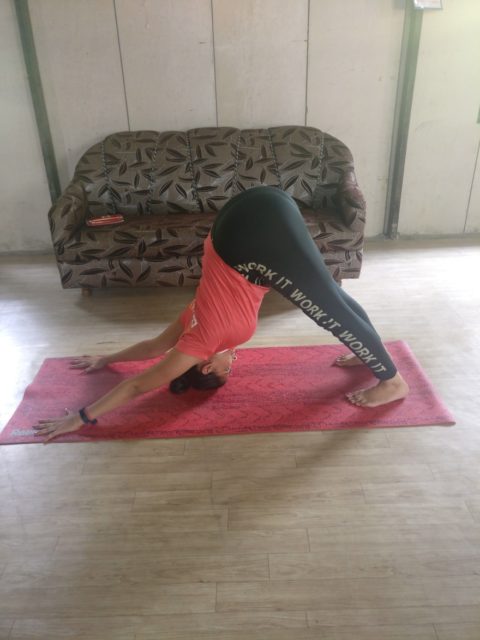
This asana helps in circulation of blood towards your head, thus relaxing the head and easing out the stressed nerves in the spine, neck and head. The asana releases stress and helps in reducing anxiety and mood swings during PMS!
- Come in the plank pose and now exhale and pull your stomach in and push your hips up, slowly bring your feet closer to the hands.
- Maintain a distance of 2-2/5 feet between hands and legs.
- Now slowly take your head deep down by sinking down with the shoulders.
- You have to make an upside down ‘V’ with your body, where the fulcrum of the V is your hips.
- Stay here for 15 seconds, close your eyes and keep your inhalation and exhalation deep.
MATSYASANA/FISH POSE
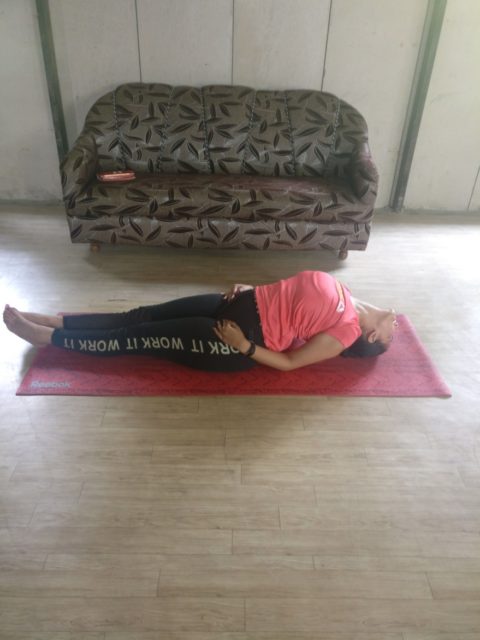
Matsya means fish. This pose is dedicated to Matsya the Fish Incarnation of Vishnu. It is said that when a massive flood was about to hit earth, Vishnu took the shape of a fish and saved Many, the human Adam. The fish carried the family of Manu on its back and also saved the sacred Vedas from getting destroyed. This asana gives the power to the body to get a strong back, neck and make the pelvic region flexible. Cyst formations and PCOS are caused by lack of flow of blood in pelvic region and lifestyle habits, this asana helps in making this region flexible. The flow of blood increases and creates pressure to wear the cyst off.
Here are the steps to do Matsyasana:
- Lie down flat on the back and slowly take your palms on either side of the head.
- The palms should face towards your feet.
- Now shift the weight on your hands and slide the top of the head down while making an arch with your neck and chest.
- Breathe for couple of times in this posture and after getting a comfortable balance, slowly release your hands and put them on the thighs.
- Deep inhalation and exhalation will really help in getting into the asana and holding it for long.
- If you are an advance level yogi you can put the lotus pose here and try to either hold the big toes or the knees.
To come back from this posture, take your hand near your head and slowly keep your head properly down. Release the padmasana and relax in shavasana for some time.
BADDHA KONASANA
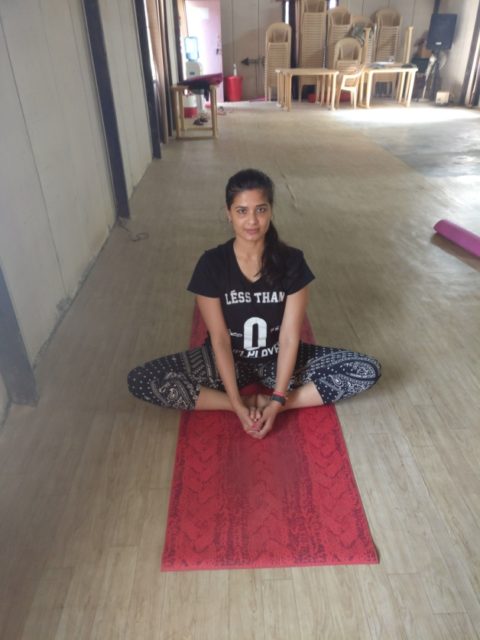
The famous pose is a boon to the ladies and all the problems related to the reproductive organs. The asana is all about making a triangle with the legs while sitting and pushing the upper body forward to feel an immense flow of blood in the pelvic region, thus removing deformities in the cycle flow.
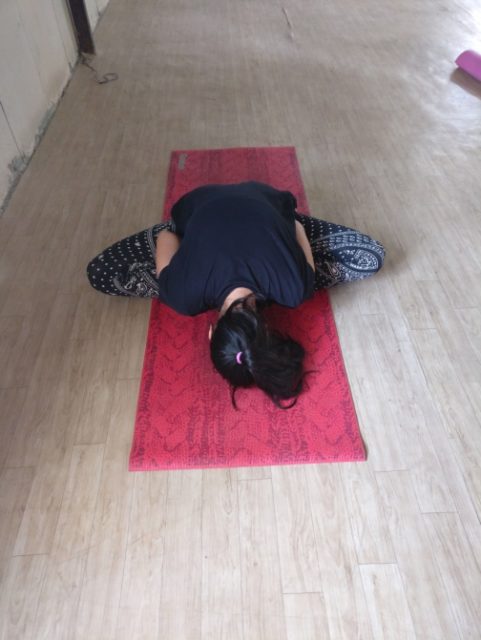
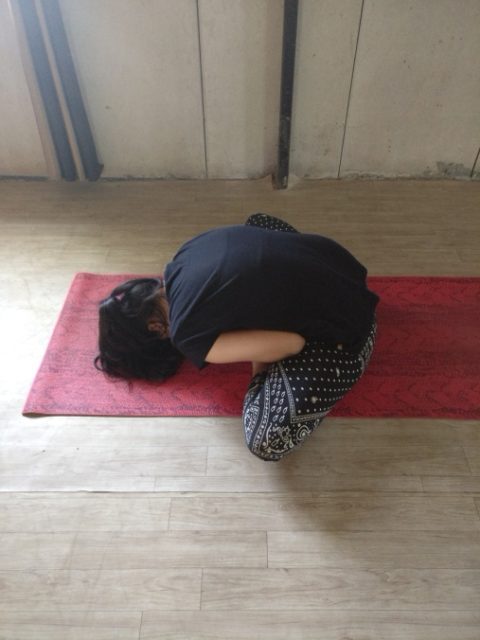
Here are steps to do baddhakonasana:
- You have to start with dandasana, where you sit on your mat and stretch your legs in front.
- Second step is to bend the knees and join the soles and heels. Now you have to bring the feet as close to the perineum region.
- Now by keeping the breath deep, open your thighs a little more. Grip your toes with your hands. Keep a constant gaze with deep breathing and feel the balance and willpower getting restored in the body. Hold this asana for as long as possible.
- Holding the toes tight, exhale completely, squeeze the abdomen in and with a straight back go down forward. You can try touching the nose, forehead or chin according to your flexibility.
- Hold the asana for half a minute or even one minute by breathing deep and constantly giving positive suggestions to fight the discomfort happening in the thighs this helps in developing the willpower, that eventually helps in becoming a stronger fighter for the battle against periods pain.
VIRASANA AND SUPTA VIRASANA
The two asanas help in controlling the bloating, heaviness, back and leg pain during periods. What more the two asanas help in increasing blood flow in the lower body!
Here are Steps to do Virasana:
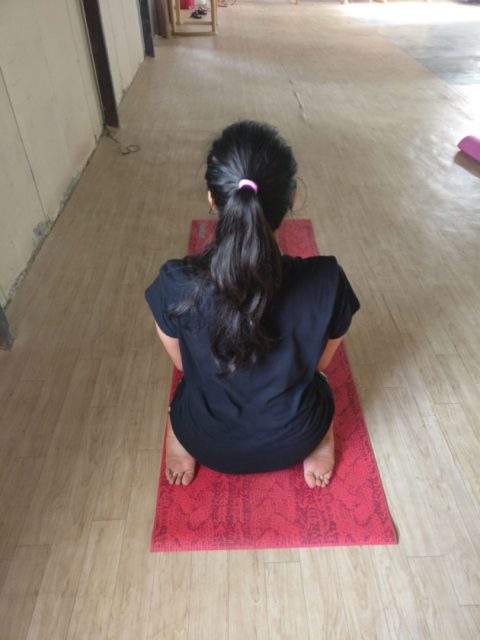
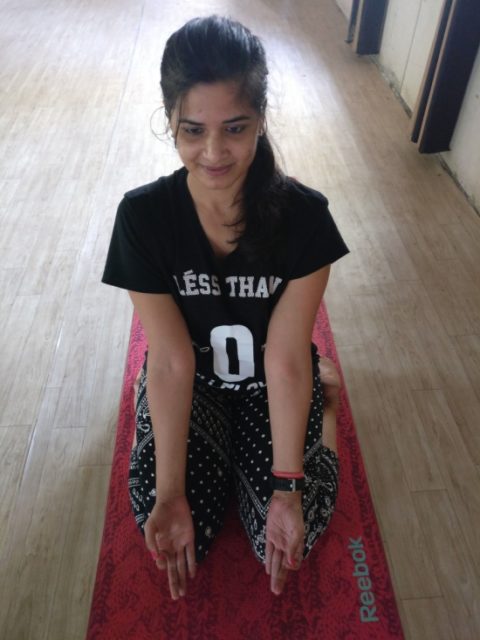
- Kneel on your mat by keeping the knees together and spreading the feet apart.
- Slowly separate the feet further and make space for your buttocks to touch down on the mat. If you can’t touch your hips down, put a yoga block or a small pillow underneath. Keep the feet at the side of the thighs. The inner side of each calf should touch the outer side of the respective thigh. Keep the toes pointing back and put your palms on your knees.
- The palms should be facing up, join the tip of the thumb and index finger and keep the other fingers straight. This is the Virasana, it should be done for as long as possible with a straight back.
Steps to do Supta Virasana or Reclining Virasana
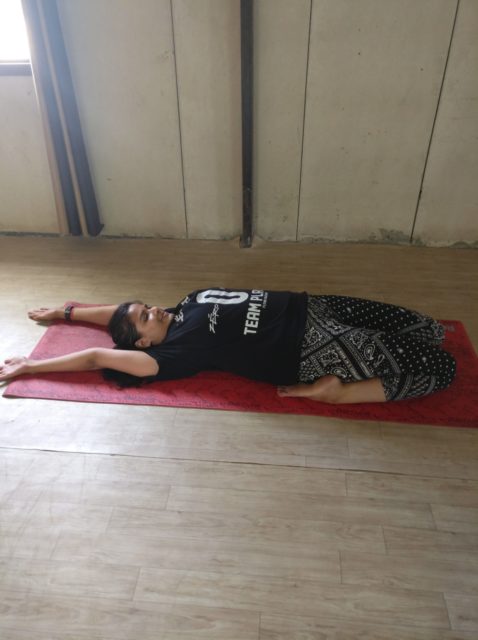
4. Once you are comfortable with the simple virasana, you should go for the supta virasana. To do this asana one has to come to the traditional Virasana as mentioned above. After coming to the Virasana, slowly recline back, and make an elbow stand at the back of the mat. Now take your elbows towards the feet and start pushing the top of the head down. Create an arc with your head and back. When you do that, hold your feet tightly and push the top of the head further down. Inhale deep and expand the chest maximum. Now when you are comfortable in this pose, release your hands from the feet and slowly take them back of the head.
NADI SHODHANA PRANAYAM
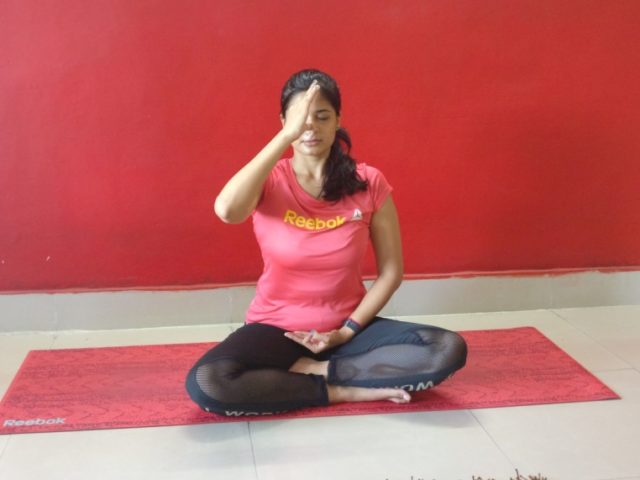
Nadi shodhana pranayam purely means clearing the nadis or the nerves in our body. The disturbance in the flow of nerves not only creates a disturbance in the flow of periods but also the hormones responsible in keeping the cycle in normal flow. The circulation of blood is directly related to circulation of breath. Hence it is important to regulate the breath with pranayam practices. One of the best pranayam for the same is the Nadi Shodhan Pranayam. This prananayam is done by activating the nostrils and focusing on removing obstacles in our respiratory system.
Steps:
- Sit in a comfortable position or sukhasana.
- Now block your right nostril and inhale through the left. Breathe in slowly without any added pressure.
- After inhaling through the left nostril, block it with your ring finger and remove your right thumb from the right nostril.
- As your remove the thumb, exhale through the right nostril slowly
- Now block the left nostril and inhale through the right.
- Keep on exhaling through the opposite nostril and inhaling from the exhaled side.
- Close your eyes and focus on your heart and give positive suggestion to your body to stay relaxed.
After completing it, lie down in shavasana or be seated for at least five minutes with your eyes closed. Feel the stress slowly drifting away from the body and blanket of relaxation spreading on you after completing the practice!






















